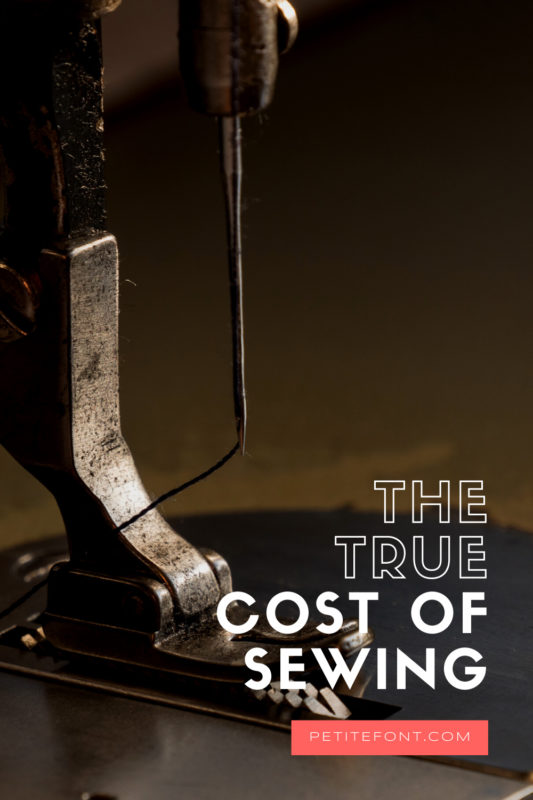
It’s a tough question: is sewing cheaper than buying clothes?
Some people get into sewing thinking it will save them money. But in a world of fast fashion, too many people have become accustomed to getting clothing on the cheap.
In the long run, the answer is yes if you value your handmade items.
But in the short term, when comparing to the instant gratification of fast fashion, the answer is no.
This is especially true when you first start learning to sew. It’s like any craft, whether it be sewing, cooking, painting, woodworking, etc. Tools and supplies cost money, and there will be a lot of supplies to go through as you learn this skill.
To get a good idea of the true cost and value of a handmade garment, I decided to do a cost analysis on a recently made blouse.
I ran the numbers on the relatively simple Loretta blouse I made for myself and took to Puerto Rico. It looks like this:
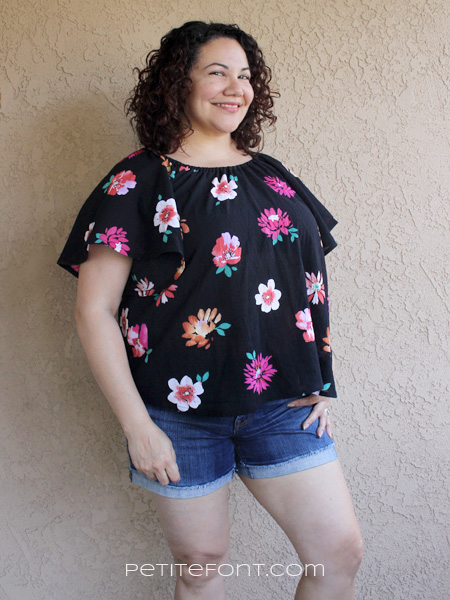
It’s a pattern I’ve used before and it’s a flowy loose fit, but it still needed a couple of adjustments. Adjustments take time. Time is money. So here is the breakdown of those numbers.
The pattern itself cost me about $3 thanks to the membership tier I’m grandfathered into at Seamwork (this is no longer available and the retail price for the pattern is $12).
Okay great! So far our total is only $3.
Pattern = $3
The fabric I chose was a 100% cotton gauze from Joann’s. I got it on sale at $7.99/yard and needed 3 yards which brought my total to $7.99 x 3 = $23.97. I even got it in a county with a lower sales tax rate than LA, but let’s not worry about tax in this scenario.
Fabric = $23.97
Plus the existing $3 for the pattern we are now at $3 + $23.97 = $26.97.
I knew I needed a size 12 for the pattern but with a bust adjustment and an armhole adjustment that I described in the post. That took about 2 hours total to figure out.
Because I’m an American citizen, I’m entitled to at least the federal minimum wage. In September 2019 that figure is $7.25 per hour. In Los Angeles County it’s actually much higher at $12 per hour, but to keep the cost of this blouse as low as possible I’ll only “pay” myself the federal minimum.
2 hours at $7.25 per hour is $14.50.
2 hours labor = $14.50
That cost for labor plus the existing cost for the pattern and fabric: $14.50 + $26.97 = $41.47
This shirt has already cost over $40 and I haven’t even started sewing it yet!!
To make the blouse, I needed a few notions. That included a fresh needle, about half a spool of thread, and about 1 yard each of 1/4″ elastic and double-fold bias tape .
Needles come in packs of 5 for about $3.29. One-fifth of that is 66 cents. A single spool of 110 yards of black all-purpose Gutermann thread is about $2. I used about half a spool total, so that’s another $1. Finally, the packages of store-bought elastic and bias tape were $4 and $2.49, respectively. The elastic came in 8-yard and the bias tape in 3-yard lengths, so I divided as needed:
Needle = $0.66
Thread = $1.00
Elastic = $0.50
Bias tape = $0.83
Notions total = $2.99
$41.47 + $2.99 = $44.46
It took me approximately 4 hours total to cut and sew up the shirt. At my federal minimum wage job, that amounts to $7.25 x 4 = $29.
4 hours labor = $29
Our new total is $44.46 + $29 = $73.46
Of that total, 6 hours worth is labor (2 hours for adjustments and 4 hours for cutting fabric and sewing for a total of $43.50). The remaining total ($29.96) is for supplies.
Total labor = $43.50
Total supplies = $29.96
Total cost of blouse = $73.46
The conservative total on this one easy-fitting handmade blouse is nearly SEVENTY-FIVE DOLLARS. That is a LOT of money.
If I’d actually paid myself the minimum wage for the county I live in, my 6 hours of labor would have amounted instead to $72 on their own. Add that to the cost of supplies ($29.96) and the total cost of the shirt would’ve skyrocketed up to $101.96.
If I hadn’t scored the fabric on sale, the regular retail price was $12.99. That’s an extra $15 to the total cost of the shirt. It would now be $116.96.
As you can see, a very simple loose-fitting top, made up of a total of merely 4 pattern pieces, can conceivably cost over $100. And why not?
Unlike a mass-produced ready-to-wear blouse, I made that shirt to fit my body. It’s made with care. The insides are hearty French seams. They’re not going to fall apart after the first, the second or even the 30th wash (#30wearschallenge).
What I made is more than a simple blouse. I made an investment. Notice how the word investment relates to and originates from “vestment” or garment? If I wear that shirt 30 times, the per-wear cost is about $3.
Can the same be said about a $5 fast fashion shirt? Will it last 30 wears?
There were more hidden costs that I didn’t include in the final total for this blouse. I used tracing paper, a quilting ruler, rotary cutter, and office supplies like a mechanical pencil, scotch tape, scissors, an eraser. Each of these run anywhere from just a few bucks to $18 for the quilting ruler.
I also didn’t charge myself for the gas to go buy the supplies, the wear and tear on my car, or the cost of using my machine (and not just the machine itself but also the electricity to run it).
All of these ancillary costs, commonly referred to as “overhead,” have to be paid by someone. When the price of a shirt at the favorite fast fashion store is only $5, who is paying the costs? How can a shirt justifiably even cost $5?
Well, the ugly truth is that the person making it wasn’t paid what I could have paid myself. That’s the bottom line.
Of course, bespoke clothing has always been more expensive than off-the-rack clothing. Mass-produced clothes, made in volume, are expressly intended to be available at a lower price point. People at all points of the economic spectrum are entitled to clothe their bodies. It is a privilege that I can make my own clothing and that I don’t have to buy off the rack if I don’t want to.
Even I myself can’t afford to pay someone to make my clothes for me. So I make them myself, as best I can.
It’s interesting (or maybe just ironic) how just a century or two ago, many people had to do this anyway.
But that is what slow fashion, the opposite of fast fashion, is about. The point is to take the time to appreciate the garment in every stitch, every fiber.
And then to make it last. Because well-made clothes will last a very long time. We invest our time to ensure that they do.
So while the short answer to the question of “is sewing cheaper than buying clothes” is no, the long answer is yes. If you do embrace slow fashion by making clothing, then you will make fewer clothes but you will wear them longer. They will last longer. In the end, you will hopefully spend less because you won’t need to replace them as often.
After today, I’m going to include the amount of time I spend on a sewing project in each blog post. I think it will give both sewists and the non-sewing reader a good idea of the complexity of a project. It will also allow me to look back on projects and see how and if I’ve improved my skillset and speed.
And hopefully, I’ll start increasing how I value that time as well.
Meg of @sewliberated made an Instagram post about this recently. I highly recommend reading through the discussion in the comments.
Let me know down in my comments if you make your own clothes and if you think about how much time you put into your garments. If you don’t make clothes, did the cost behind handmade clothes surprise you?
Pin your favorite image:


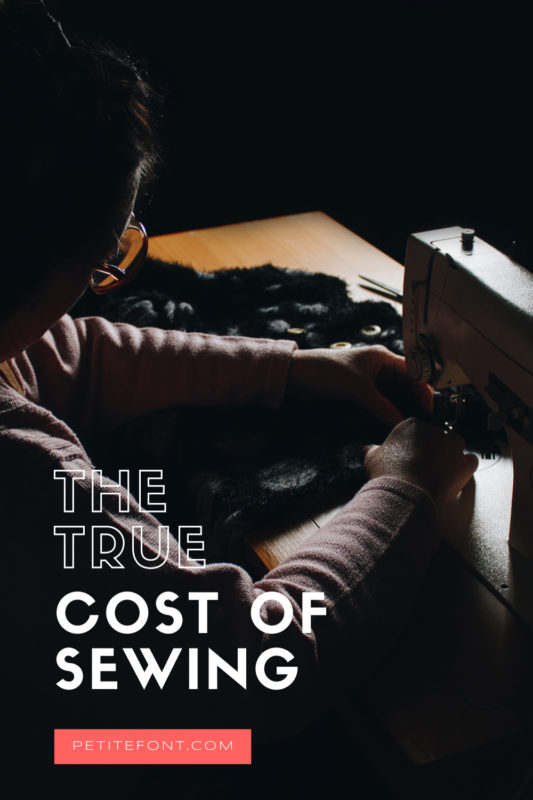
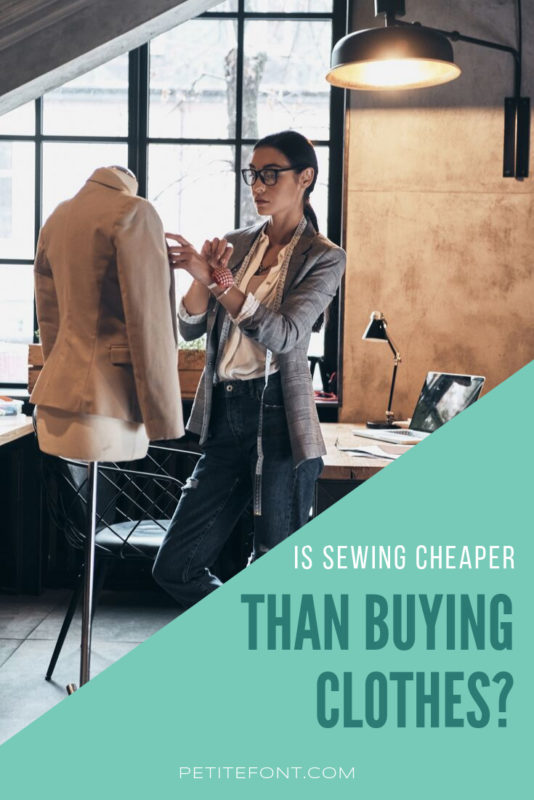

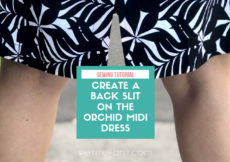
Great post once again! I do not sew my own clothes (I wish I had the skills, but I don’t). My mother made a lot of clothing throughout my childhood, and I remember how time consuming it was for her!
If you ever want to learn, I’m more than happy to show you how it’s done!!
What a fascinating breakdown of the costs involved. My Mother in law used to sew a lot but got to the point on her pension that she couldn’t afford it any longer. I loved her handmade clothes because they were designed to fit properly.
Thank you for an excellent story!!
Oh, that is heartbreaking about your MIL, but it’s wonderful that you could appreciate her craft.
I am not a cutty sewey person and i am pleased that I no longer try. I can not bear to imagin how much money I have wasted trying. Thank you for opening my eyes and giving me a valid excuse for buying (all be it vintage) and not making my own.
Even if it’s costly, I respect hand making clothes. I don’t have the skill!
Interesting post, my sewing isn’t good enough to make my own clothes. I can repair clothes, sort of, but a complete garment no way. I like a nice sale, I rarely pay full price.
I think you are amazing if you can sew your own clothes just like the amazing people who can knit a jumper / cardigan without dropping stitches. I make lots of holes… and collect as well as drop stitches.
I sew clothes and shoes for myself and my family. Sure, if you count in all the money you would get paid for that time, it is way more expensive than store bought clothes. But I don’t think about what my time costs, because that is the money I’m saving by making the clothes myself.
But it is really nice to see, how much handmade clothing would be worth. It makes one even prouder of the things one has made.
You make shoes too? That was something I was always fascinated by. How did you get into it?
I was not happy with the stiff toddler shoes you can buy in the shops, barefoot shoes seemed to be the better option for the right development of the feet. But those kind of shoes are hella expensive, so I was really torn, because kids feet grow that fast. And right in that moment, my favourite cloth diaper pattern store released a pattern for barefoot shoes for kids. So I just jumped into it.
It depends on the sewing charges and the cost of cloth. If you can find a bargain when it comes to cloth, maybe it’s cheaper
Yes Arv, that’s part of the compromise. If the cost is too low, however, you might jeopardize the longevity of the end product. As I showed, I did buy my fabric at a discount, and saved myself $15 in the process, but it’s still decent quality.
I make most of my own clothes and selected clothes for my husband and baby. Some things definitely are cheaper to make myself- high quality coats in particular. Others I make because I enjoy having unique, quality and bespoke fitting clothing.
I’m still having a heart attack over the fact that minimum wage is only $7.25. WTF?? That is a shameful tragedy. No one could possibly live on that, even if they had a full-time job. People should be able to live a decent life if they work full time hours. That is poverty wages.
Yes, it’s shameful. What is worse is that some people don’t even make that much.
I make my own clothing because it’s cheaper in the long run for me in that clothing women who are as tall as I am and that will fit me correctly is extremely difficult to find. It may look more expensive on paper for me to sew my own clothing, yet if I’m going to value my time to try to shop for clothing I would spend a whole lot more in attempting to find clothing. Not to mention the deplorable amount of money the people who make fast fashion in other countries make. But, maybe that’s a discussion for… Read more »
Yes, a discussion for a different blog post, but still a very important discussion. You bring up a good point in the amount of time spent shopping, too! Time is money, no matter how it is spent. But at least in the long run we know we put our time investment into something that fits (and lasts).
I’m the only non-sewing/knitting person in my family. My grandmother made most of my clothes. She was asked to sell her stuff countless times, but could never price it in a way non-makers would believe. So she decked out the family and never charged a thing, which isn’t to say that people shouldn’t charge their worth.
Same with Mom now, she sends us homemade things and puts the price of the fabric/wool on customs declarations. So, I pay that way, ha!
Your mom is clever!
Artistically, yes. But I have to pay the post office to release the packages. My birthdays are expensive. While I was pregnant, our homemade clothes were 500. She still makes me laugh.
That is a little mean! I don’t charge my mother for her clothing. I even supply the fabric (though my dad does prefer to buy the silk for his shirts). At least she still makes you laugh!
This is a great breakdown of how much it costs to sew a single garment. Whenever I tell someone I sew, they inevitably suggest that I must save a lot of money making my own clothes. Nope! I like to buy breathable fabrics and to take my time over the finishes, so when you put together the costs of the fabric and my time, each dress I make probably costs me as much as one bought from a rather pricy shop. But I know it’s been well-made and I know it will fit me better than anything store-bought, so that’s… Read more »
Yes! Everything YES. I did a similar post for a shirt that I made for my husband, and it also worked out at a way high cost. Fast fashion has a LOT to answer for – no, a T-shirt should NOT cost £2. It’s been made by a person with skills and should be valued as such. People always seem to think that homemade is cheaper – I always say it depends on whether you shop at Primark or Prada! Great post 💜
It’s remarkable, isn’t it! I’m sure at one point homemade WAS cheaper but that was because what was available in stores wasn’t Primark quality. You got your Prada at home and it lasted or you had nothing. Now, well…what’s the link to your post, I’d love to read it!